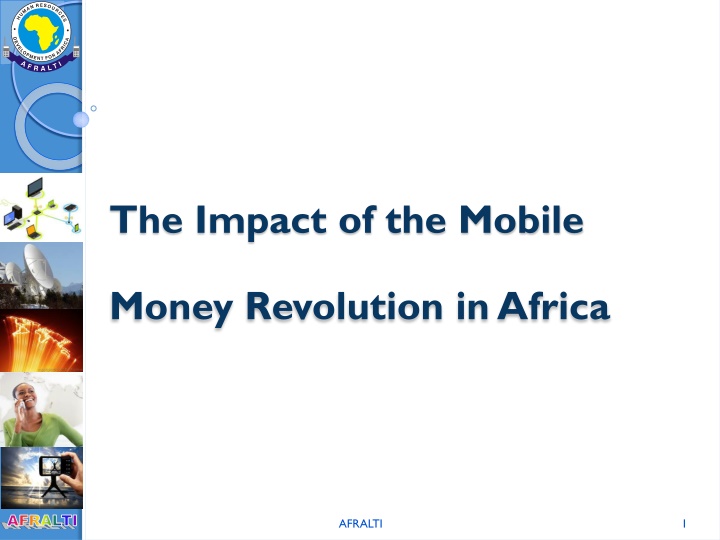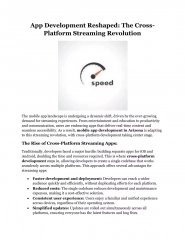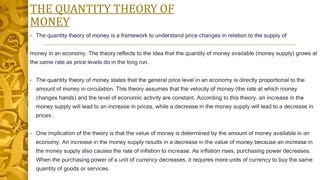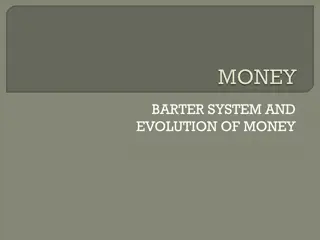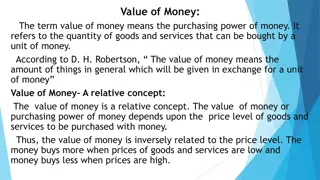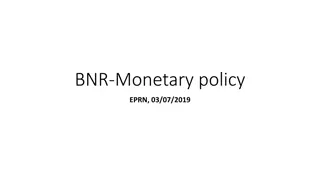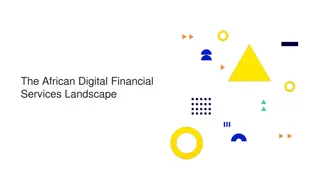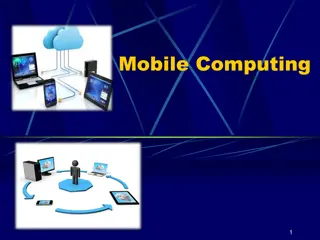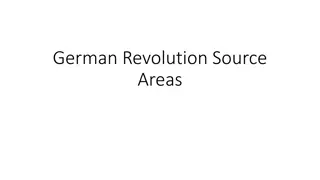The Impact of the Mobile Money Revolution in Africa
The mobile money revolution in Africa has led to significant growth in the industry, impacting society and raising regulatory issues. With mobile money services rapidly expanding worldwide, particularly in developing markets, the region has seen a shift towards mobile access due to fixed-line limitations. Sub-Saharan Africa has experienced substantial growth in unique subscribers, with mobile services playing a key role in providing financial inclusion and driving economic growth. Enablers such as mobile penetration, ICT knowledge, and demand for domestic fund transfers have facilitated the success of mobile money services in the region.
Download Presentation

Please find below an Image/Link to download the presentation.
The content on the website is provided AS IS for your information and personal use only. It may not be sold, licensed, or shared on other websites without obtaining consent from the author.If you encounter any issues during the download, it is possible that the publisher has removed the file from their server.
You are allowed to download the files provided on this website for personal or commercial use, subject to the condition that they are used lawfully. All files are the property of their respective owners.
The content on the website is provided AS IS for your information and personal use only. It may not be sold, licensed, or shared on other websites without obtaining consent from the author.
E N D
Presentation Transcript
The Impact of the Mobile Money Revolution in Africa AFRALTI AFRALTI 1
Objectives Growth of the Industry Mobile money services Impact on the society Regulatory issues AFRALTI 2
Mobile Money services in the world With 255 services in 89 countries as of December 2014, mobile money is now available in 61% of developing markets worldwide AFRALTI 3
Mobile Access As a result of fixed-line limitations, mobile services still represent more than 90% of all telephone lines in service in Africa. The popularity of cheaper prepaid services, which in some markets account for up to 98% of all mobile subscribers AFRALTI Source:internetworldstats.com 4
Mobile Growth Sub-Saharan Africa (SSA) has been the fastest growing region over the last five years in terms of both unique subscribers and connections (i.e. SIM cards), with the unique subscriber base growing at a compound annual growth rate (CAGR) of 17% per annum over the period. By mid-2014, there were 329 million unique subscribers, equivalent to a penetration rate of 38%. AFRALTI 5
Growth of the Industry Unique subscribers and penetration rates in Sub-Saharan Africa AFRALTI 6
Mobile Services Consumers, governments and businesses across SSA are rapidly adopting mobile not only as basic communication tool but also to access information and a growing range of new applications and services. Mobile money services are a clear success story for the industry, with mobile money bringing financial services to millions of previously unbanked citizens across the region, driving economic growth and promoting financial inclusion. AFRALTI 7
Enablers of Mobile Money Conducive Environment Substantial mobile penetration Increasing ICT knowledgeable population Strong demand for domestic fund transfers Shift in customer preference for convenience Reach difficulties for financial services Spread of locations and working hour restrictions Less / no medium available for short term storage of funds Banks discourage low balances Low service quality of existing alternatives AFRALTI
Significance Of Mobile Money Mobile Platform extended for financial services Competitive advantage over Traditional Money Systems. Reduces unbanked and under-banked population Usage based revenue model profitable Low cost transaction model AFRALTI
Access to finance Access to finance remains a key challenge for populations across SSA, with only around 20% of families in the region having access to bank accounts Mobile money services have already made a significant contribution to delivering financial inclusion, though there is still much to be done, AFRALTI 10
Mobile money services Mobile money services have seen strong take-up in a number of markets, including Kenya, Uganda and Tanzania. In Kenya alone, there were 26 million registered mobile money users at the end of 2013, with estimates suggesting that nearly 60% of the adult population in the country were using the service AFRALTI 11
Mobile phone-based Money Transfer (MMT The recent introduction of mobile phone- based money transfer (MMT) services in developing countries has generated a lot of interest among development partners. It facilitates transfer of money in a quick and cost effective way. Offers an easy and secure platform for small savings to majority of rural populations with no access to formal financial services. AFRALTI 12
New Innovations M-Shwari in Kenya - enables subscribers to save and borrow money EcoCash by Econet Wireless Zimbabwe for saving money Tigo Kiiray by Tigo Senegal in partnership with mobile micro insurance specialist Bima - offers micro insurance product Safaricom in Kenya m-commerce platform - The operator has already signed up 122,000 merchants to accept M-PESA to pay for goods and services, including local supermarkets. AFRALTI 13
Impact on Society Improving individual income Improving Health Improving Agriculture Improving Business AFRALTI 14
Regulations The role of the regulator is to create an enabling regulatory environment for mobile money. By providing incentives for service providers to invest and avoiding overly prescriptive or burdensome requirements. Example: Kenya s central bank has managed to encourage innovation and growth while preserving the stability and soundness of the financial sector. AFRALTI 15
